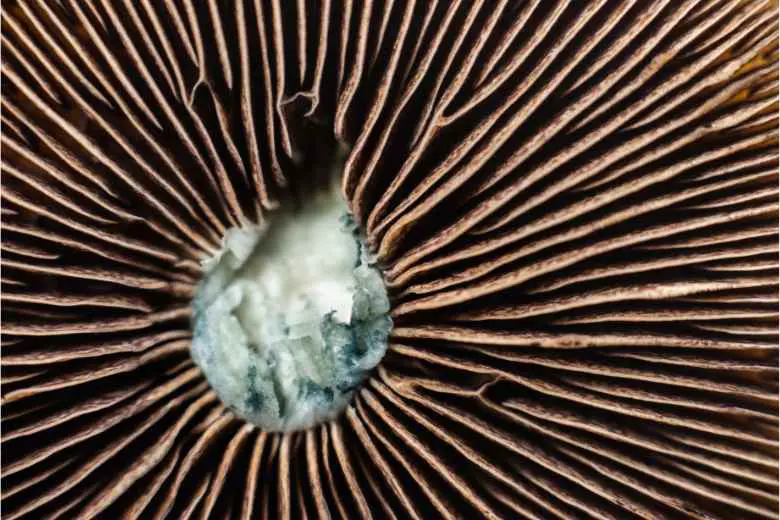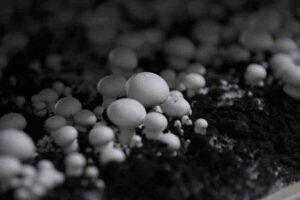
Mushroom spores are a great way to propagate mushrooms for both commercial and home settings. However, it is important to store them properly in order to retain their viability and ensure that you are successful in your attempts to grow mushrooms.
This article will provide an overview of the best methods for storing mushroom spores and what steps you should take to ensure that your spores remain viable. It will also provide information on the different types of storage containers that are ideal for storing spores. By following these steps, you can make sure that your spores remain viable and ready for use.
What are Mushroom Spores?
Mushroom spores are the reproductive cells of fungi, specifically mushrooms. They are incredibly tiny – often measuring less than 3 microns in size – and are released by mature mushrooms when they reach a certain stage in their life cycle.
These spores travel on the wind and, if they land in the right conditions, will germinate and grow into a new mushroom. Mushroom spores are incredibly resilient and can survive in harsh conditions, making them incredibly effective at spreading the species.
They are also the main way to propagate mushrooms for culinary and medicinal use.
Why is it Important to Store Mushroom Spores Properly?
Mushroom spores are the seeds of the mushroom, and they are essential in the growth of a healthy mushroom crop. Proper storage of the spores is important because it helps ensure that they remain viable for use.
When stored correctly, the spores can remain viable for much longer periods of time. Proper storage of the spores also prevents contamination from other fungus, bacteria, and mold, which can quickly ruin a crop.
Additionally, storing the spores correctly can help reduce the risk of diseases that can spread from one mushroom to another. With the proper storage of mushroom spores, mushroom growers can be confident that their crop will remain healthy and productive over time.
Types of Storage for Mushroom Spores
Mushroom spores are the reproductive cells of fungi, and depending on the species, they can be stored for long periods of time in a variety of ways. In general, spore storage requires a dry, cool environment with low humidity and no direct light.
Depending on the method, spores can be stored for short-term (up to a month) or long-term (several years) use. The most common types of storage for mushroom spores include paper, glass vials, and refrigeration. Paper storage involves placing the spores on a piece of paper or tin foil and wrapping it around a cool, dry object.
Glass vials provide airtight containers that will protect spores from drying out and prevent contamination. Refrigeration is the most reliable method for long-term storage, as it keeps spores in a dormant state.
Whichever method you choose, proper storage of mushroom spores is essential for a successful mushroom crop!
Preparing Mushroom Spores for Storage
Mushrooms are a delicious and nutritious ingredient in many dishes, but before you can enjoy them, you need to prepare the mushroom spores for storage.
The process is fairly simple, but it requires some preparation and care.
First, you need to clean the mushrooms by carefully removing any dirt or debris.
Next, you should trim the stems and cut the mushrooms into the desired size. To ensure maximum freshness, it is best to store the mushroom spores in a cool, dark place, such as the refrigerator.
Finally, make sure to keep the mushrooms in an airtight container to prevent them from drying out. With these simple steps, you can easily prepare your mushroom spores for storage and enjoy them for weeks to come.

Best Practices for Storing Mushroom Spores
Mushroom spores are a valuable resource for mushroom growers, and proper storage is essential for preserving their viability. To ensure healthy mushroom growth, follow these best practices for storing mushroom spores:
1. Keep them refrigerated – Spores should be stored in a cool, dark place, such as a refrigerator. This will extend their shelf life by slowing down the rate of metabolism.
2. Avoid moisture and humidity – Moisture and humidity will encourage bacteria and fungus growth, which can degrade the quality of the spores.
3. Store in airtight containers – Spore samples should be stored in airtight containers to prevent contamination from bacteria and other fungi.
4. Regularly check for contamination – Contamination can occur over time, so it’s important to regularly inspect the spores for signs of spoilage.
By following these simple best practices, mushroom growers can preserve the quality of their spores and ensure healthy mushroom growth.
Long-Term Storage of Mushroom Spores
Mushroom spores are a great way to store mushrooms for long-term use. Spores are the microscopic reproductive cells of mushrooms and, when dried, can remain viable for years, providing an easy and reliable way to store mushrooms for long-term use.
The spores can then be rehydrated and used to cultivate new mushrooms, allowing for a steady supply of fresh mushrooms.
With the right conditions, mushroom spores can be stored for years without losing their viability, making them a great option for long-term storage.
Troubleshooting Common Issues with Storing Mushroom Spores
Mushroom spores are crucial for cultivation, and proper storage ensures their viability over time. Here’s a guide on troubleshooting common issues with storing mushroom spores:
1. Dried Spore Prints:
Problem: Spore prints lose viability.
Solution: Store spore prints in a cool, dark, and dry place. Ziplock bags or small envelopes inside airtight containers can prevent moisture. Ensure you label them with the strain and date of collection. Store in the refrigerator for long-term storage, but avoid freezing.
2. Spore Syringes:
Problem: Contamination or spores not germinating.
Solution:
- Avoiding Contamination: Ensure the syringe and needle are sterile before and after use. Use alcohol wipes or flame to sterilize.
- Spore Clumping: Spores can sometimes clump together. Before use, shake the syringe vigorously to disperse the spores evenly.
- Storage: Store spore syringes in a cool, dark place. A refrigerator works well for longer periods, but avoid freezing as this can damage the spores.
3. Moisture Issues:
Problem: Excess moisture in storage can lead to mold or decreased viability. Solution: Use silica gel packets in storage containers to absorb any excess moisture. Ensure storage containers are airtight.
4. Long-term Storage:
Problem: Spores losing viability over time.
Solution: For long-term storage, consider:
- Temperature: Cold storage (like a refrigerator) can extend spore life. Avoid freezing.
- Light: Spores should be stored in the dark to maintain viability.
- Air: Oxygen can degrade spores over time. Consider vacuum sealing if possible.
5. Unlabeled or Mixed-up Strains:
Problem: Forgetting which strain is which.
Solution: Always label spore prints, syringes, and containers with the mushroom strain and date of collection. It’s a simple step that can save a lot of confusion later on.
6. Using Old Spores:
Problem: Concerns about the viability of old spores.
Solution: The older the spores, the lower the germination rate. However, spores can remain viable for several years if stored correctly. Always make a test batch before committing to a large cultivation effort with old spores.
7. Buying Spores:
Problem: Received bad quality or non-viable spores from vendors.
Solution: Only purchase from reputable vendors with good reviews. If the spores don’t seem viable or there are contamination issues, reach out to the vendor for a replacement or refund.
8. Legal Issues:
Problem: Unsure of the legal status of spores.
Solution: In many places, certain mushroom spores are illegal, especially if they are from psychedelic varieties. Always research local laws before purchasing, storing, or using spores.
Remember, spore storage can significantly impact the success of your mushroom cultivation. Proper care and attention to detail can ensure that your spores remain viable for as long as possible.
FAQs About the how to store mushroom spores
What is the best way to store mushroom spores?
Answer: It is best to store mushroom spores in a cool, dark, and dry place such as a refrigerator or a dark cupboard. Make sure to keep the spores away from moisture and direct sunlight.
How long can mushroom spores be stored?
Answer: When stored properly, mushroom spores can last up to several years. Make sure to check the spores periodically to ensure no mold or debris is present.
Can I freeze mushroom spores?
Answer: Freezing is not recommended as it can cause damage to the spores. However, if you decide to freeze the spores, make sure to use a vacuum sealer to prevent any moisture from getting inside and keep the spores stored in a dark place in the freezer.
Conclusion
Storing mushroom spores is an important part of the mushroom cultivation process. It is important to store the spores in a cool, dark, and dry area to ensure that they remain viable for long-term storage. An airtight container is also recommended to keep out moisture and other contaminants. Additionally, the spores should be stored at temperatures between 35-40°F and checked regularly for any signs of contamination. By following these guidelines, mushroom spore storage can be successful and the spores can remain viable for long-term use.







